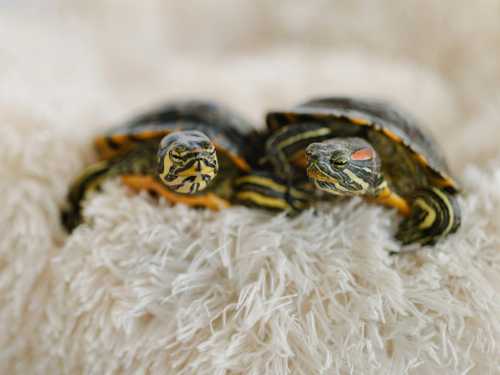
Turtles that quickly get bored are a sore subject for pet store employees. Most often, people who bring turtles with the words “take them for free” bought them not in the store at all, but on the street.
Often, when another new turtle owner realizes all the difficulties of keeping a reptile at home, he thinks that it is easier to get rid of it.
Parents often buy “dwarf” red-eared turtles in resort towns, giving in to their child's requests, and then decide not to take the pet with them, because the child has played with it in two days, and carrying the animal with them is troublesome. As a result, at the end of the season, many small turtles appear in all local rivers, fountains and ponds.
In other cities, the picture is generally similar. Sometimes the owner holds on for several years until the turtle outgrows the aquarium, and then can't stand it anymore and releases the plate-sized reptile into a pond in a city park.
What's wrong with that?
I won't talk about responsibility for your children, because everyone already knows that.
But some people don’t know that you can’t release a pet into the wild, you can only throw it out to the elements. Wildlife is home to local wildlife. For pets, even such as turtles, home is our apartments. They are not part of our wildlife, and although many of them are able to adapt to new conditions, it is precisely this ability to survive that makes them dangerous to local residents.
You can't incorporate a new element into an already formed biocenosis without harming that biocenosis. How a turtle harms a reservoir – more on that below.
What will happen to the released turtle?
Most die immediately. Those that survive the summer die in the winter if the winter is cold and the body of water they are released into freezes over.
If the pond does not freeze to the bottom and there is enough food, the turtle can survive. However, the food issue is at odds with the closed world of the pond.
What does a water turtle eat?
Water turtles are active predators (especially when young) and omnivores. They swim quickly and have sharp beaks that allow them to grip their prey tightly. Their diet in nature includes anything they can catch: fish eggs and fry, tadpoles, frogs, insects, mollusks, and aquatic vegetation.
Will not say hello:
- frogs and their eggs;
- fish and their eggs;
- bog turtles (this is an endangered ancient species of our European turtles, which cannot fight off the arriving American red-eared turtles);
- water snakes;
- to the chicks of waterfowl and shore-nesting birds.
Once in the closed ecosystem of a pond or lake, turtles quickly destroy populations of amphibians, small fish, and invertebrates, disrupting the food chain.
So, if ducks, minks, moorhens, and other birds nested and raised chicks in this same pond every year, then over the summer a significant part of their brood can easily die in the stomachs of voracious turtles.
I once heard a mother and her daughter talking by the pond about how they released their turtle Glasha here last year, and she must have grown up, had kids, and is doing great.
Glasha did not crawl out onto the shore to greet her former owners, but a duck with two ducklings swam past them on the water surface. Only two ducklings instead of the usual ten! Didn't Glasha get them for lunch? It is unlikely that the children who come to this pond to look at the ducklings will be happy to see the local Glasha at lunch.
Do not throw turtles into water bodies. This is a serious environmental problem.





